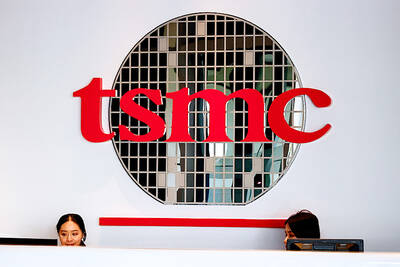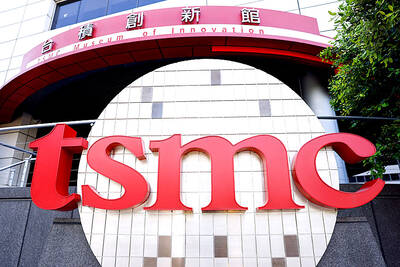Apple Inc suppliers are scrambling to get enough screens ready for the company’s new iPhone 6 as the need to redesign a key component disrupted panel production ahead of next month’s expected launch, supply chain sources said.
It is unclear whether the hiccup could delay the launch or limit the number of phones initially available to consumers, the sources said, as Apple prepares to roll out larger-screen iPhones for the year-end shopping season.
The issue highlights the risks and challenges that suppliers face to meet Apple’s tough specifications, and comes after a separate screen technology problem, since resolved, in making thinner screens for the larger iPhone 6.
Cupertino, California-based Apple has scheduled a media event for Sept. 9, where many expect it to unveil the iPhone 6 with both 4.7 inch and 5.5 inch-screens — bigger than the 4-inch screen on the iPhone 5s and 5c.
Two supply chain sources said display panel production suffered a setback after the backlight that illuminates the screen had to be revised, putting screen assembly on hold for part of June and last month. One said that Apple, aiming for the thinnest phone possible, initially wanted to cut back to a single layer of backlight film, instead of the standard two layers for the 4.7-inch screen, which went into mass production ahead of the 5.5-inch version.
However, the new configuration was not bright enough and the backlight was sent back to the drawing board to fit in the extra layer, which cost time and temporarily halted some screen assembly operations, the source said.
Output is now back on track and suppliers are working hard to make up for lost time, the supply chain sources added.
Japan Display Inc, Sharp Corp and South Korea’s LG Display Co Ltd have been selected to make the iPhone 6 screens, the sources said.
Apple is known to make tough demands on its parts suppliers for new iPhones and iPads, as it competes to create designs, shapes, sizes and features that set it apart and command a premium price in the fiercely competitive gadget market.
This can cause glitches and delays, including screen problems that crimped supplies of the high-resolution version of Apple’s iPad Mini last year.
It also highlights the danger for suppliers of depending too heavily on Apple for revenues, creating earnings volatility.
Earlier this month, Japan Display, said to be the lead supplier for the new iPhone panel, said orders for “a large customer” — which analysts said was Apple — arrived as expected, but shipments might be delayed in the July-to-September quarter.
Japan Display’s reliance on Apple’s cyclical business has made some investors wary. UBS Securities forecast that Apple would contribute more than a third of the Japanese firm’s total revenue in the year to March next year.
The nation’s Apple suppliers and assemblers saw lower-than-expected growth last month even as factories rushed output ahead of new smartphone launches, reflecting the erratic nature of the business.
“Currently, there’s a small shortage in supply of a specialized component for our communication devices,” a Pegatron Corp (和碩) spokesman said. “This kind of problem regularly occurs and the impact on production is negligible.”
Supply chain sources had previously said challenges with the new iPhone’s screen in-cell technology, which eliminates one of the layers in the LCD screen to make it thinner, caused a delay in the production of the larger 5.5-inch version.
One display industry source said the in-cell issues had now been resolved.

Chizuko Kimura has become the first female sushi chef in the world to win a Michelin star, fulfilling a promise she made to her dying husband to continue his legacy. The 54-year-old Japanese chef regained the Michelin star her late husband, Shunei Kimura, won three years ago for their Sushi Shunei restaurant in Paris. For Shunei Kimura, the star was a dream come true. However, the joy was short-lived. He died from cancer just three months later in June 2022. He was 65. The following year, the restaurant in the heart of Montmartre lost its star rating. Chizuko Kimura insisted that the new star is still down

While China’s leaders use their economic and political might to fight US President Donald Trump’s trade war “to the end,” its army of social media soldiers are embarking on a more humorous campaign online. Trump’s tariff blitz has seen Washington and Beijing impose eye-watering duties on imports from the other, fanning a standoff between the economic superpowers that has sparked global recession fears and sent markets into a tailspin. Trump says his policy is a response to years of being “ripped off” by other countries and aims to bring manufacturing to the US, forcing companies to employ US workers. However, China’s online warriors

Taiwan Semiconductor Manufacturing Co (TSMC, 台積電) listed the challenges of ensuring export control compliance by its customers, months after the company’s artificial intelligence (AI) silicon was found to have flowed to US-sanctioned Huawei Technologies Co (華為) via intermediaries. “TSMC’s role in the semiconductor supply chain inherently limits its visibility and information available to it regarding the downstream use or user of final products that incorporate semiconductors manufactured by it,” the Hsinchu-based company said in its latest annual report released on Friday. The world’s largest contract chipmaker said the constraint impedes its ability to prevent unintended end-uses of its semiconductors, as well

Taiwan Semiconductor Manufacturing Co (TSMC, 台積電) expects steady growth this year despite global economic uncertainty due to continued momentum from tech trends such as 5G, artificial intelligence (AI) and high-performance computing (HPC) applications. In the company’s annual shareholders’ report released on Thursday, TSMC chairman and CEO C.C. Wei (魏哲家) said the company is well-positioned to meet market demand with its differentiated technology platforms. The company’s 2-nanometer process is on track for volume production in the second half of this year, while its next-generation nanosheet-based A16 process, aimed at HPC applications, is scheduled for mass production late next year, Wei said. Advanced technologies —